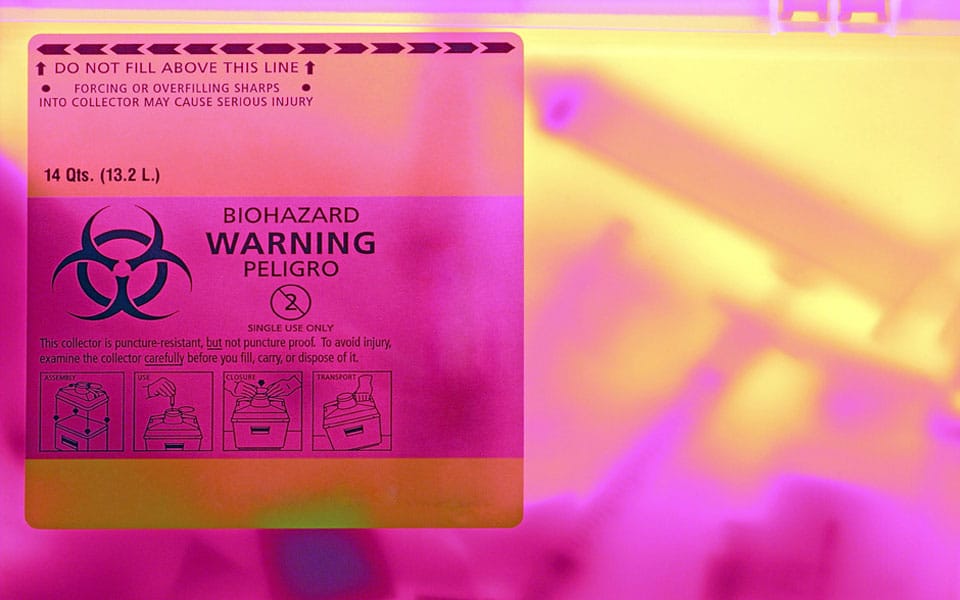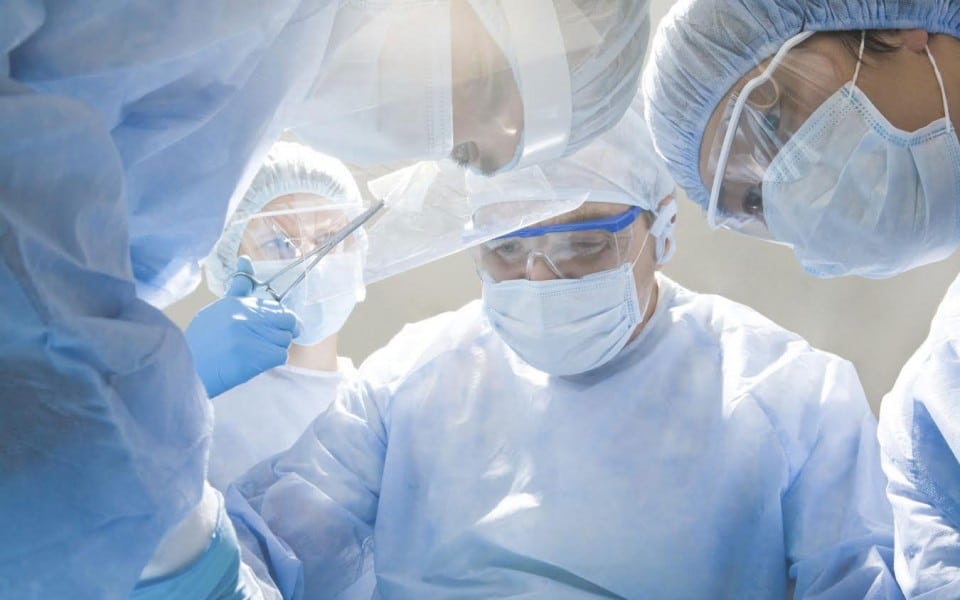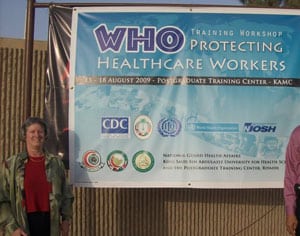
Implement EPINet at your facility
Committed to improving occupational safety in healthcare by minimizing exposure to blood and body fluids.
Implement EPINet® at Your Healthcare Facility

The International Safety Center invites you to join the effort to improve worker safety in healthcare settings.
The Center will be expanding its healthcare data surveillance network. Let us know if your facility would like to contribute your data to our network. If not, you are encouraged to use EPINet® report forms and software for your own internal surveillance, incident reporting, recordkeeping, and data analysis free of charge.
Get FREE EPINet® Report Forms and Manual
What Can I Do with EPINet®?
EPINet® allows you to improve the safety and health of your workers by helping you to measure, monitor, and analyze needlesticks and sharps injuries and occupational exposures to blood and body fluids.

You can:
- Identify needlestick and sharps injuries that may be prevented with the use of engineering controls, including safety medical devices
- Identify blood and body fluid exposures that may be prevented with the use of engineering controls or personal protective equipment
- Share and compare blood and body fluid exposure information, as well as successful exposure prevention measures with other institutions
- Evaluate the efficacy of new devices designed to prevent sharps injuries and blood and body fluid exposures
- Target high-risk devices and procedures for intervention
- Analyze needlestick injury and blood and body fluid exposure frequencies by attributes like jobs, devices, and procedures
- Prepare monthly, quarterly, and annual blood and body fluid exposure reports
- Follow post-exposure testing of exposed healthcare workers
Furthermore, the Needlestick Safety and Prevention Act of 2000 and the 2001 revised Bloodborne Pathogens Standard require healthcare facilities to maintain a Sharps Injury Log. The log must include, at a minimum, the type and brand of medical device involved in the needlestick exposure incident, the department where the exposure occurred, and an explanation of how it occurred.
EPINet® for Access® meets all of these requirements.
NOTE: EPINet® reporting forms are compatible with NIOSH’s Occupational Health and Safety Network (OHSN). If you need assistance transmitting your data to OHSN using EPINet®, please contact us so that we can help.
EPINet® for Healthcare Systems
EPINet® can be used as a hospital or clinic’s stand-alone program or across an entire healthcare system or Integrated Delivery Network.
If you wish to develop a system-wide EPINet® program, ask us to help you create your very own EPINet® network for all facilities within your system. This will allow you to share data and compare each facility to the next. EPINet® reports and software will allow you to capture and share your own data and measure your successes over time.
Download the Network Administrator’s manual for step-by-step instructions on how to manage your EPINet network data.
How Can I Order EPINet®?

If you are interested in joining our EPINet® Network, please contact us to find out how.
If you are interested in using EPINet® for your own internal surveillance, please contact Ginger Parker to receive your FREE EPINet® software program and manual:
p. 434-962-3470
e. gparker@aoec.org
Please note: We also offer EPINet®-OR, a version of EPINet® designed specifically for the surgical setting. This program is suitable for both inpatient and outpatient surgical settings, as well as labor and delivery suites.
To access EPINet in Japanese, contact Yumiko Hosomi with the Japanese Research Group for Occupational Infection Control and Prevention (JRGOICP). The JRGOICP distributes Japanese translated version of EPINet (Japan-EPINet).
Technical Support for EPINet®
Free technical support is available to all EPINet® program users. Please contact Ginger Parker at:
p. 434-962-3470
e. gparker@aoec.org
Download EPINet® Resources
We recently updated our EPINet® manuals and report forms. Download your documents to begin.
- 2018 EPINet Manual
- 2018 Needlestick and Sharp Object Injury Report Form
- 2018 Blood and Body Fluid Exposure Report Form
- 2018 Post-Exposure Follow-Up Report Form
- 2019 EPINet-OR Manual
- 2019 Operating Room Needlestick and Sharp Object Injury Report Form
- 2019 Operating Room Blood and Body Fluid Exposure Report Form
- 2019 Operating Room Post-Exposure Follow-Up Report Form
These updates to 2018 and 2019 editions are thanks in great part to a grant from B Braun Medical, Inc. We owe special thanks to our clinical occupational safety experts that provided peer-review and guidance.
If you are not interested in upgrading your forms at this time, please feel free to use the old forms available here only until August.
- 2010 EPINet Manual
- 2010 Needlestick and Sharp Object Injury Report Form
- 2010 Blood and Body Fluid Exposure Report Form
- 2010 Post-Exposure Follow-Up Report Form
We also offer report forms in multiple languages for our international participants.
Key:
SOI = Needlestick and Sharp-Object Injury Report
BBF = Blood and Body Fluid Report
PEF = Post-Exposure Follow-up Report
| Africa | SOI | BBF | PEF |
|---|---|---|---|
| Argentina | SOI | BBF | PEF |
| Australia/New Zealand | SOI | BBF | PEF |
| Austria | SOI | BBF | PEF |
| Belgium (French version) | SOI | BBF | PEF |
| Belgium (Dutch version) | SOI | BBF | PEF |
| Brazil | SOI | BBF | PEF |
| Cambodia (Khmer/English) | SOI | BBF | NA |
| Canada (English) | SOI | BBF | PEF |
| Canada (French) | SOI | BBF | PEF |
| Chile | SOI | BBF | PEF |
| Colombia | SOI | BBF | PEF |
| China | SOI | BBF | PEF |
| Croatia | SOI | BBF | PEF |
| Czech Republic | SOI | BBF | PEF |
| Democratic Republic of Congo (French) | SOI | BBF | PEF |
| Denmark | SOI | BBF | PEF |
| Egypt | SOI | BBF | PEF |
| Finland | SOI | BBF | PEF |
| Hong Kong | SOI | BBF | PEF |
| India | SOI | BBF | PEF |
| Ireland | SOI | BBF | PEF |
| Kuwait | SOI | BBF | PEF |
| Mexico | SOI | BBF | PEF |
| Netherlands (The) | SOI | BBF | PEF |
| Norway | SOI | BBF | PEF |
| Peru | SOI | BBF | PEF |
| Poland | SOI | BBF | PEF |
| Poland [EPINet-OR] | SOI | BBF | PEF |
| Russia | SOI | BBF | PEF |
| Saudi Arabia | SOI | BBF | PEF |
| Slovakia | SOI | BBF | PEF |
| Slovenia | SOI | BBF | PEF |
| Sweden | SOI | BBF | PEF |
| Sweden [EPINet-OR] | SOI | BBF | PEF |
| Turkey | SOI | BBF | PEF |
| Taiwan | SOI | BBF | PEF |
| United Kingdom | SOI | BBF | PEF |
| Uruguay | SOI | BBF | PEF |
| Venezuela | SOI | BBF | PEF |
Note about downloading EPINet® forms: These forms may be freely copied and distributed for non-commercial use in healthcare facilities. All forms must include our copyright statement.
EPINet® forms are available as PDF files; you must have Adobe Acrobat Reader to view them.